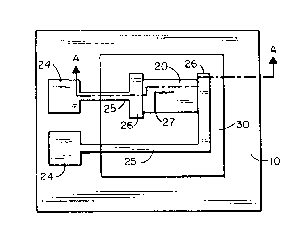Some of the information on this Web page has been provided by external sources. The Government of Canada is not responsible for the accuracy, reliability or currency of the information supplied by external sources. Users wishing to rely upon this information should consult directly with the source of the information. Content provided by external sources is not subject to official languages, privacy and accessibility requirements.
Any discrepancies in the text and image of the Claims and Abstract are due to differing posting times. Text of the Claims and Abstract are posted:
| (12) Patent: | (11) CA 1309758 |
|---|---|
| (21) Application Number: | 1309758 |
| (54) English Title: | COPPER THICK FILM MATERIAL SYSTEMS |
| (54) French Title: | SYSTEMES DE MATERIAU CONDUCTEUR EN FILM EPAIS |
| Status: | Expired and beyond the Period of Reversal |
| (51) International Patent Classification (IPC): |
|
|---|---|
| (72) Inventors : |
|
| (73) Owners : |
|
| (71) Applicants : |
|
| (74) Agent: | R. WILLIAM WRAY & ASSOCIATES |
| (74) Associate agent: | |
| (45) Issued: | 1992-11-03 |
| (22) Filed Date: | 1988-08-24 |
| Availability of licence: | N/A |
| Dedicated to the Public: | N/A |
| (25) Language of filing: | English |
| Patent Cooperation Treaty (PCT): | No |
|---|
| (30) Application Priority Data: | ||||||
|---|---|---|---|---|---|---|
|
THICK FILM MATERIAL SYSTEM
ABSTRACT
A material system for manufacturing thick film
resistors on a ceramic dielectric substrate is dis-
closed. The system includes the application and fixing
of resistor terminations composed of a precious conduc-
tor material to a dielectric substrate. Resistor
material is deposited over portions of the resistor
terminations and to the dielectric substrate intermedi-
ate the resistor terminations. Terminal pads, conductor
traces and resistor interconnections are printed on the
dielectric substrate using a base conductor material.
The resistor interconnections are deposited and fixed
to the resistor terminations and to portions of the
resistor material. The resistor material is trimmed to
tolerance by kerfing the resistor material and a
dielectric encapsulant is applied substantially over
the resistor interconnections and resistor material.
Note: Claims are shown in the official language in which they were submitted.
Note: Descriptions are shown in the official language in which they were submitted.

2024-08-01:As part of the Next Generation Patents (NGP) transition, the Canadian Patents Database (CPD) now contains a more detailed Event History, which replicates the Event Log of our new back-office solution.
Please note that "Inactive:" events refers to events no longer in use in our new back-office solution.
For a clearer understanding of the status of the application/patent presented on this page, the site Disclaimer , as well as the definitions for Patent , Event History , Maintenance Fee and Payment History should be consulted.
| Description | Date |
|---|---|
| Inactive: IPC from MCD | 2006-03-11 |
| Inactive: IPC from MCD | 2006-03-11 |
| Inactive: IPC from MCD | 2006-03-11 |
| Inactive: IPC from MCD | 2006-03-11 |
| Time Limit for Reversal Expired | 2001-11-05 |
| Letter Sent | 2000-11-03 |
| Grant by Issuance | 1992-11-03 |
There is no abandonment history.
| Fee Type | Anniversary Year | Due Date | Paid Date |
|---|---|---|---|
| MF (category 1, 5th anniv.) - standard | 1997-11-03 | 1997-09-22 | |
| MF (category 1, 6th anniv.) - standard | 1998-11-03 | 1998-09-14 | |
| MF (category 1, 7th anniv.) - standard | 1999-11-03 | 1999-09-13 |
Note: Records showing the ownership history in alphabetical order.
| Current Owners on Record |
|---|
| GTE COMMUNICATION SYSTEMS CORPORATION |
| Past Owners on Record |
|---|
| THOMAS OZAKI |